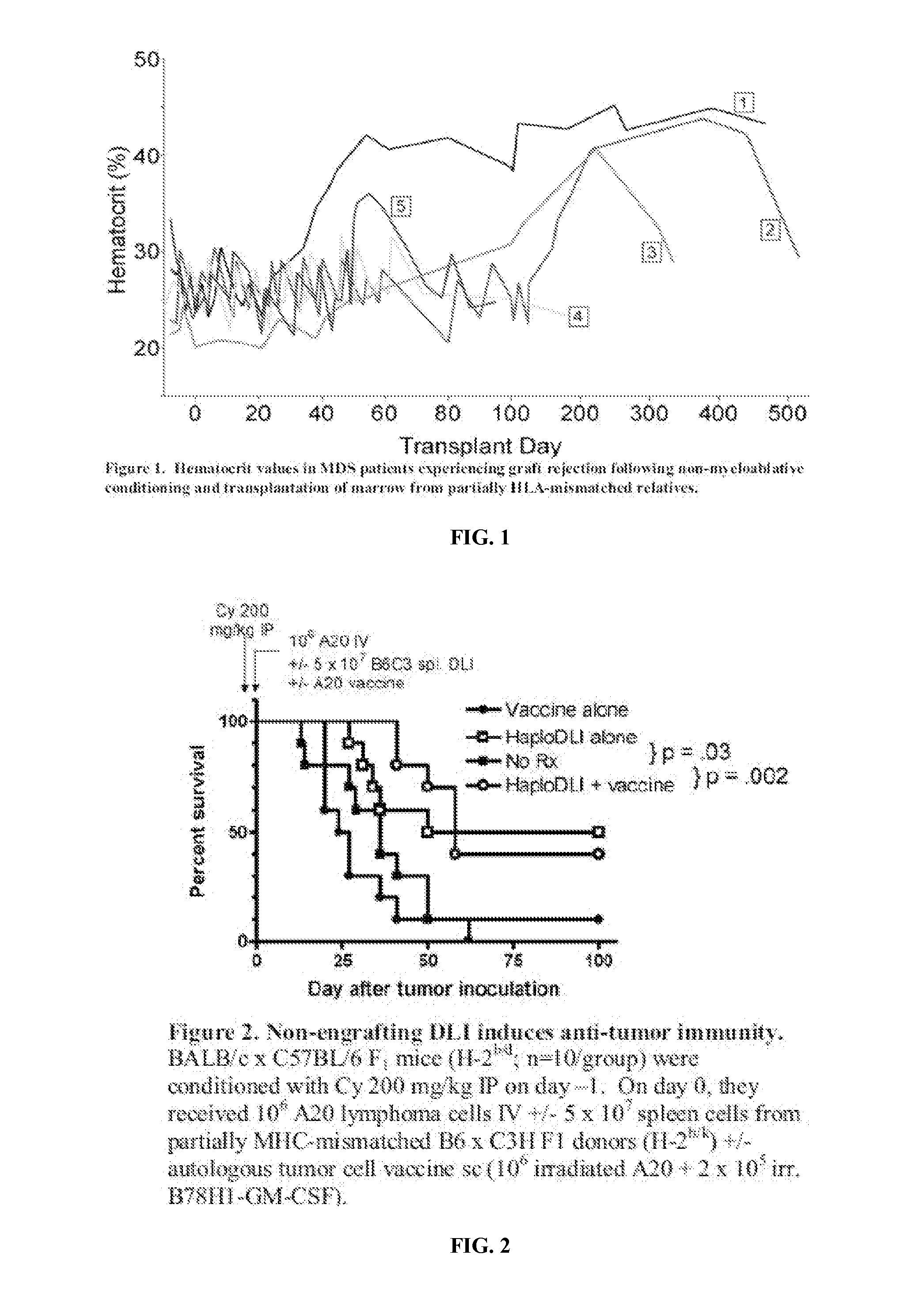Methods and Compositions for Infusion of Transiently Engrafting, Selected Populations of Allogeneic Lymphocytes to Treat Cancer
- Summary
- Abstract
- Description
- Claims
- Application Information
AI Technical Summary
Benefits of technology
Problems solved by technology
Method used
Image
Examples
example 1
IDE Device
[0065]The investigational agent to be used in this trial is the CliniMACS system with CliniMACS® CD8 reagent, a medical device that is used to enrich or deplete CD8+ T cells from human blood products. The CliniMACS® System intended for selection of CD8+ cells comprises four primary components: 1) CliniMACS® CD8 Reagent—colloidal super paramagnetic iron-dextran beads linked to a murine antibody against human CD8; 2) CliniMACSplus Instrument—a software controlled instrument that processes the blood sample (cell product); 3) CliniMACS® Tubing Set, (Standard or LS)—a single-use, sterile, disposable tubing set with two proprietary cell selection columns; and 4) CliniMACS® PBS / EDTA Buffer—a sterile, isotonic phosphate buffered, 1 mM EDTA, saline solution, used as external wash and transport fluid for the in vitro preparation of blood cells. The system utilizes magnetic cell sorting (MACS®), a powerful tool for the isolation of many cell types, to selectively enrich or deplete th...
example 2
Transiently Engrafting Donor Lymphocytes Induce Clinical Tumor Responses
[0066]To date, only two therapies are capable of prolonging the survival of patients with MDS. The first, allogeneic BMT, has achieved some long term cures, as well as delay in disease progression. This therapy is only applicable to a small fraction of affected patients due to age, donor availability, and comorbidities. The second is the methyltransferase inhibitor, 5-azacitidine. This therapy has been shown to prolong median survival by 7 months compared to supportive care alone10. Some patients with MDS respond to immunosuppressive regimens, such as cyclosporine, antithymocyte globulin (ATG) or steroids, with a sustained increase in blood counts. This finding is similar to aplastic anemia, where immunosuppression treats the autoimmune component leading to the cytopenias. The favorable results obtained with agents that specifically target the immune system suggest that MDS is a disease that is susceptible to im...
example 3
Clinical Experience with CD8+ T Cell Depleted Allogeneic Stem Cell or Lymphocyte Infusions
[0068]There are no reports of patients treated with Cy followed by an infusion of CD8+ T cell depleted PBCs from haploidentical donors, so it is not possible to provide preliminary safety data. However, there have been reports of patients undergoing alloBMT who have received CD8+ T cell-depleted grafts or of patients in relapse after alloBMT who have received CD8+ T cell depleted PBMC infusions. The goal of CD8+ T cell depletion was to reduce the incidence of GVHD while preserving the anti-leukemia effect of the infusion. With regard to GVHD, the studies did not yield a conclusive answer, with some showing a possible benefit and others showing none. Interestingly, infusion of CD8+ T cell-depleted DLI induced the activation of endogenous CD8+ T cells, a finding that is consistent with the hypothesis that CD8+ T cell-depleted DLI can effectively awaken a host CD8+ T cell response against cancer.
[...
PUM
| Property | Measurement | Unit |
|---|---|---|
| Fraction | aaaaa | aaaaa |
| Fraction | aaaaa | aaaaa |
| Volume | aaaaa | aaaaa |
Abstract
Description
Claims
Application Information
 Login to View More
Login to View More - R&D
- Intellectual Property
- Life Sciences
- Materials
- Tech Scout
- Unparalleled Data Quality
- Higher Quality Content
- 60% Fewer Hallucinations
Browse by: Latest US Patents, China's latest patents, Technical Efficacy Thesaurus, Application Domain, Technology Topic, Popular Technical Reports.
© 2025 PatSnap. All rights reserved.Legal|Privacy policy|Modern Slavery Act Transparency Statement|Sitemap|About US| Contact US: help@patsnap.com



